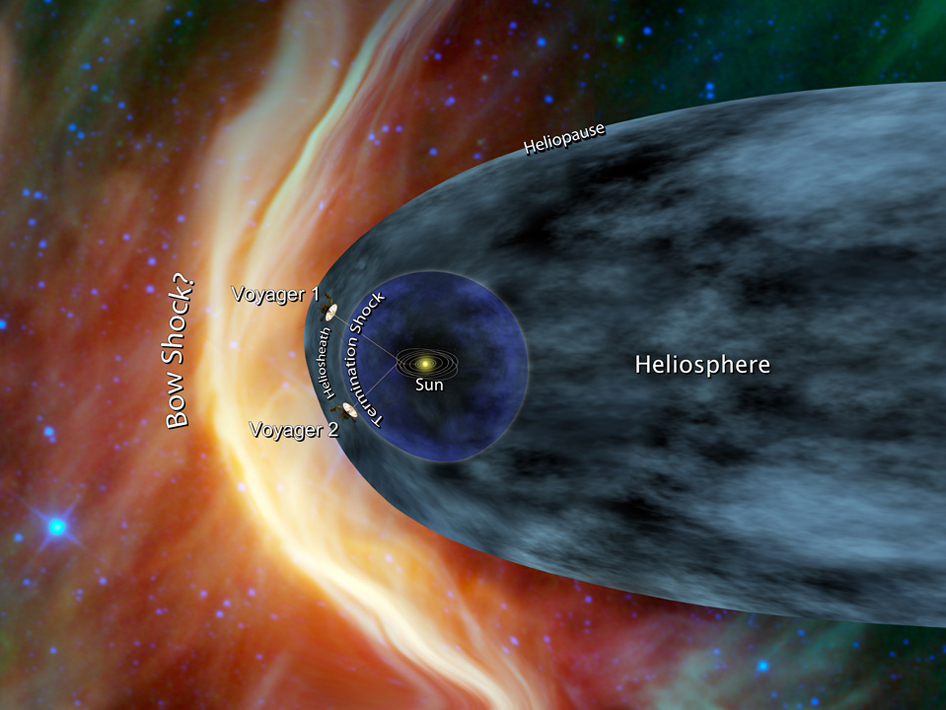NASA's Faraway Voyager 2 Probe Switches to Backup Thrusters

NASA sent a command to its 34-year-old Voyager 2 spacecraft, which is poised on the very edge of the solar system, to switch to a backup set of thrusters to save energy.
The probe, along with its sister craft Voyager 1, has already passed beyond all the planets in our solar system and is now about 9 billion miles (14 billion kilometers) away in a region called the heliosheath, the outermost region of our solar system where the solar wind from the sun meets the interstellar medium.
Scientists at NASA's Deep Space Network sent the command to Voyager 2 on Nov. 4 to switch from its primary thrusters, which control the spacecraft's roll, to its backup set. They received a signal today (Nov. 7) confirming that the spacecraft had accepted the commands.
The change will save about 12 watts of power by allowing engineers to turn off the heater that keeps the fuel line to the primary thruster warm. With this energy efficient change, Voyager 2 should have enough power to operate for another decade, NASA officials said.
The Voyager probes launched in 1977 on a mission to survey Jupiter and Saturn, and managed to observe Uranus and Neptune as well. Voyager 1 is now the farthest manmade object in space, and the two probes are now on track to be the first spacecraft to study interstellar space.
Follow SPACE.com for the latest in space science and exploration news on Twitter @Spacedotcom and on Facebook.
Get the Space.com Newsletter
Breaking space news, the latest updates on rocket launches, skywatching events and more!
Join our Space Forums to keep talking space on the latest missions, night sky and more! And if you have a news tip, correction or comment, let us know at: community@space.com.

Space.com is the premier source of space exploration, innovation and astronomy news, chronicling (and celebrating) humanity's ongoing expansion across the final frontier. Originally founded in 1999, Space.com is, and always has been, the passion of writers and editors who are space fans and also trained journalists. Our current news team consists of Editor-in-Chief Tariq Malik; Editor Hanneke Weitering, Senior Space Writer Mike Wall; Senior Writer Meghan Bartels; Senior Writer Chelsea Gohd, Senior Writer Tereza Pultarova and Staff Writer Alexander Cox, focusing on e-commerce. Senior Producer Steve Spaleta oversees our space videos, with Diana Whitcroft as our Social Media Editor.










